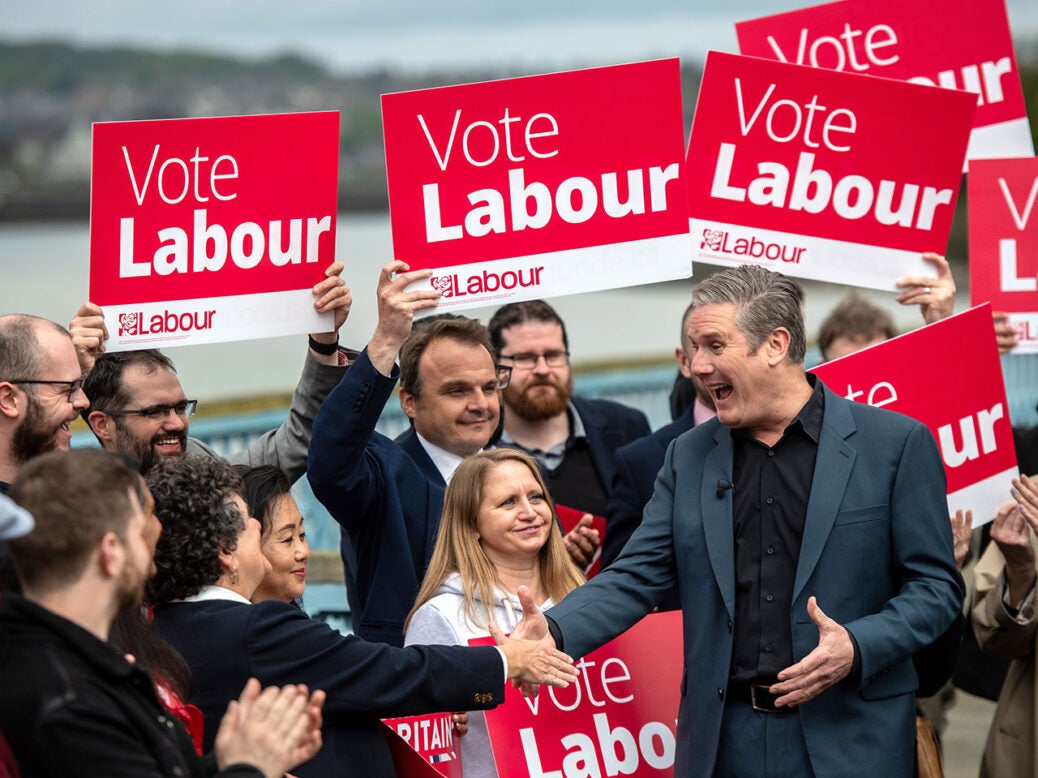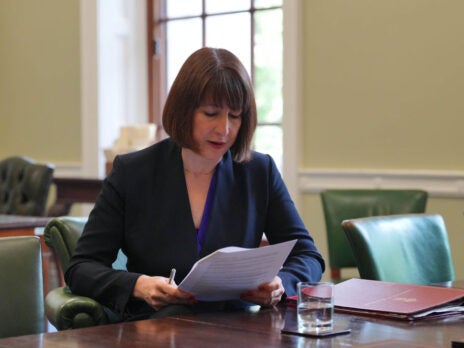
Local elections aren’t general elections. That should be your first and final thought about everything that has been said about the results of the vote on 4 May. Voter turnout is different. Voter enthusiasm, broadly, is low. But the data is there. And history proves we can make certain claims about what the local election results mean for the shape of the next government.
The Conservatives’ net loss of more than 1,000 seats was broad-based. In a geographically varied set of local elections, the Tory losses pervaded every region, safe seats and otherwise. Of the ward losses sustained, 37 per cent were to Labour, 31 per cent to the Lib Dems, and 15 per cent to the Greens. In a general election, where the Conservatives are forecast to lose as many as 170 seats, those proportions are unlikely to be repeated – rather 80 to 90 per cent of the seats would be heading Labour’s way.
But do the local elections reflect the polls? Is Labour on course for power? Are the party’s 15-point poll leads real?
A metric I tend to stick to is what the national polls say at the time of the local elections. It’s imperfect, because polling isn’t always watertight in its accuracy, but based on recent parliamentary by-elections we have grounds to believe it’s fairly reliable.
In the run up to 4 May, Labour was around 15 points ahead of the Tories (as opposed to six points last year). This striking shift reflects a four-point rise in Labour’s vote and a five-point fall in the Tories’ vote.
With nearly all the council ward results now in, we can perform a similar analysis of actual votes cast. If we look at council seats that were up for election both last year and this year, and featured Labour and Conservative candidates, we can detect a similar pattern. Of the 5,000 wards contested this year, more than 1,000 match this criteria.
In 2022 the average Tory vote share in these wards was 31 per cent; this year it was 27 per cent. Labour, meanwhile, saw its average vote increase from 39 per cent last year to 41 per cent this year. That makes Labour’s rise two points smaller than the national polls and, conversely, the Tories’ fall one point larger. But, in truth, the difference in numbers isn’t all that significant. Broadly, the shift in comparable English wards appears to be reflecting the national polls.
[See also: Britain Elects – The 2023 English local election results]
I said as much on the New Statesman podcast last Friday, with only a quarter of the results in, and I repeat it now with 99 per cent of them in. Based on the average swing between last year and this year, the local elections reflect nationwide trends.
Comparing them to 2019 is much more difficult and, to my mind, a fool's game. Those local elections happened before the post-Brexit realignment (and it’s worth noting that the Conservatives gained a few Labour seats in the Black Country and north Lancashire). The absence of the Brexit Party as an organised force in local government gave Ukip one final chance to shine but it didn’t stand candidates everywhere, nor was it organised everywhere. Comparing last year with this year makes more sense to my mind and the conclusion is clear: the local election results broadly reflect the polls.
I want to touch on the word “broadly” there. Because although the average swing reflects the national picture, the “distribution” of the Labour and Tory votes is more fragmented. Excluding the smaller parties for a moment, Labour needs to win 123 Conservative seats to achieve a majority of one in the House of Commons (326 seats). In reality, that number is obviously smaller, because some of Labour’s target seats are held by the SNP, but stay with me a moment. That majority of one, assuming a uniform swing, would come in the shape of Bassetlaw (which would go to Labour by an ultra-thin margin).
In this year’s local elections, Labour topped the polls in Bassetlaw with 51 per cent of the vote to the Conservatives’ 34 per cent. In Great Grimsby, which is number 114 on Labour’s list of Tory targets, the party led by ten points. In South Thanet, target number 111, Labour led by... four points. Move further down the list of Labour targets, such as Swindon North, Walsall North, Dudley North, Aldershot (target 184), Rochester and Strood, and Cannock Chase (target 275!) and Labour topped the local election vote, in some cases by a double-digit margin – a far bigger lead than in more traditional marginals.
In Blackpool North, meanwhile, the Conservatives have a slight edge over Labour and also led in the council wards comprising Keighley in West Yorkshire and Filton and Bradley Stoke in Bristol. Such anomalies are few and far between, however, and in the latter two cases we should note the prominence of the Green and Lib Dem vote shares – which I am not convinced would be quite as prominent at a general election.
[See also: Britain Predicts]
I wonder if the absence of a uniform swing may have coloured analyses and seat projections based on partial results. We are seeing bigger swings in safe seats than in more marginal ones. In one sense, we can read this as Labour’s vote – or rather the anti-Conservative vote – being efficiently distributed. Whatever the complexity of the national swing, the situation is certainly discouraging for the Conservatives. For the party to be defeated in Medway as badly as it was in Wakefield and Hartlepool does not bode well for its hopes of a fifth election victory.
This year’s local elections expose that the offensive being conducted on Conservative battlegrounds is perhaps the most broad it has ever been. Not only in so-called Red Wall boroughs are the Tories falling back, but in "Commuterville" and Blue Wall England they are doing just as badly, if not more so. What that risks blunting in the general election to come is the concept of uniform swing, however historically useful it has so often been. But the situation as present is thus. The prevailing attitude of most voters is one of a “time for change” – agreed with by more than six in ten people. And unfavourability towards the Conservative brand is at an all time high, while for Labour and its leader, it is middling, at best. In local elections, voters sought to vote with the party most prominent locally to defeat the Conservatives. In local authorities, that hasn’t exclusively been to the benefit of Labour, but in a general election, I suspect it would be more so.
When one considers all this, alongside the fact that the national average swing in comparable Con-Lab wards mirrors that which we see in national polling, I struggle to see how Labour is not on course for a majority at the general election.
[See also: Can Brand Rishi Sunak save the Tories at the polls?]


